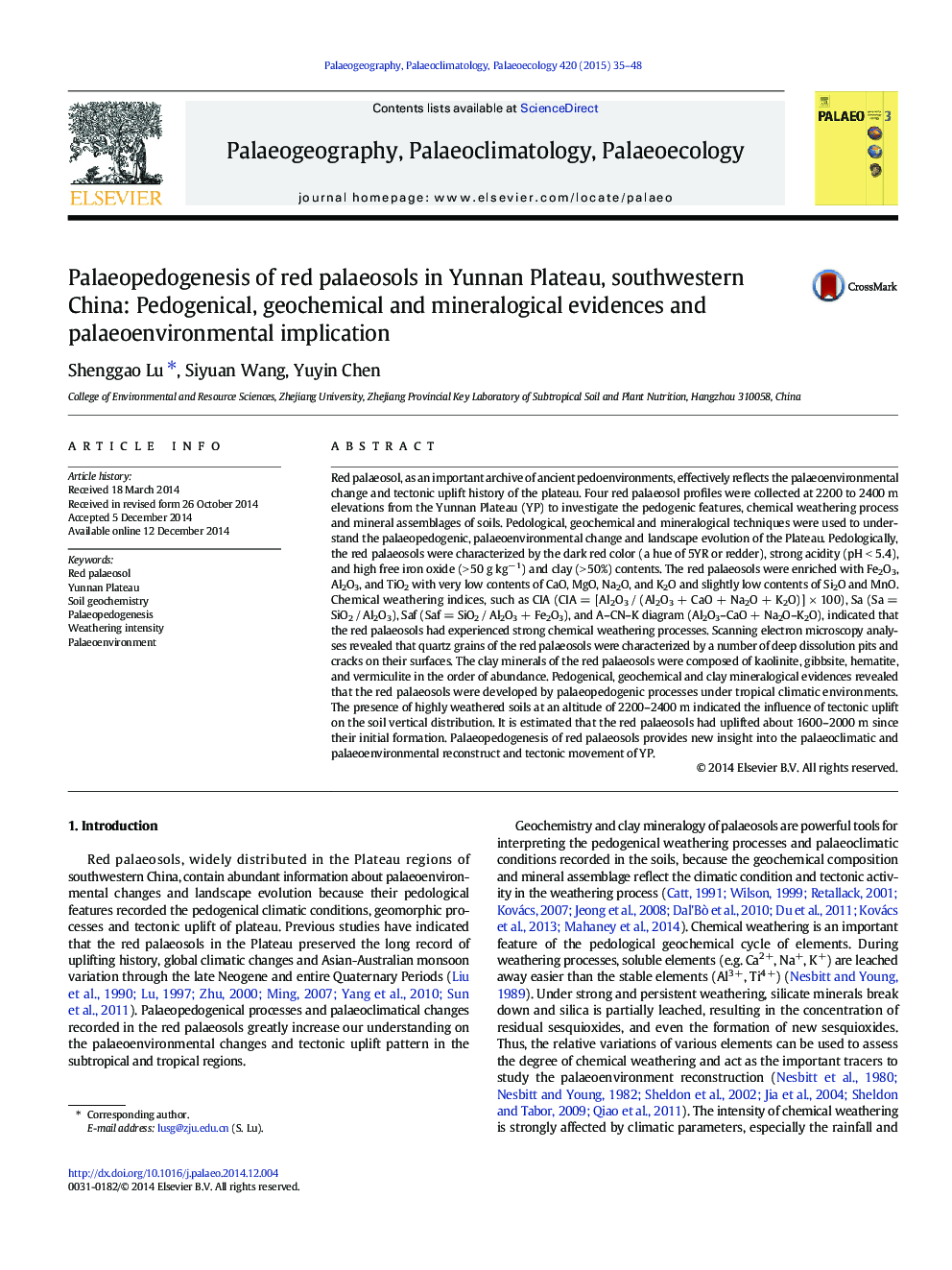| کد مقاله | کد نشریه | سال انتشار | مقاله انگلیسی | نسخه تمام متن |
|---|---|---|---|---|
| 4466055 | 1622170 | 2015 | 14 صفحه PDF | دانلود رایگان |
• Highly weathered palaeosol is distributed in the planation surface of Yunnan Plateau.
• Red palaeosol is featured by red color, strong acid, and high Fed and clay contents.
• Palaeosol experienced strong chemical weathering with enrichment of Al2O3 and TiO2.
• Clay minerals are dominated by kaolinite, gibbsite, hematite, and vermiculite.
• Palaeopedogenesis reflects palaeoclimatic changes and tectonic activity of plateau.
Red palaeosol, as an important archive of ancient pedoenvironments, effectively reflects the palaeoenvironmental change and tectonic uplift history of the plateau. Four red palaeosol profiles were collected at 2200 to 2400 m elevations from the Yunnan Plateau (YP) to investigate the pedogenic features, chemical weathering process and mineral assemblages of soils. Pedological, geochemical and mineralogical techniques were used to understand the palaeopedogenic, palaeoenvironmental change and landscape evolution of the Plateau. Pedologically, the red palaeosols were characterized by the dark red color (a hue of 5YR or redder), strong acidity (pH < 5.4), and high free iron oxide (> 50 g kg− 1) and clay (> 50%) contents. The red palaeosols were enriched with Fe2O3, Al2O3, and TiO2 with very low contents of CaO, MgO, Na2O, and K2O and slightly low contents of Si2O and MnO. Chemical weathering indices, such as CIA (CIA = [Al2O3 / (Al2O3 + CaO + Na2O + K2O)] × 100), Sa (Sa = SiO2 / Al2O3), Saf (Saf = SiO2 / Al2O3 + Fe2O3), and A–CN–K diagram (Al2O3–CaO + Na2O–K2O), indicated that the red palaeosols had experienced strong chemical weathering processes. Scanning electron microscopy analyses revealed that quartz grains of the red palaeosols were characterized by a number of deep dissolution pits and cracks on their surfaces. The clay minerals of the red palaeosols were composed of kaolinite, gibbsite, hematite, and vermiculite in the order of abundance. Pedogenical, geochemical and clay mineralogical evidences revealed that the red palaeosols were developed by palaeopedogenic processes under tropical climatic environments. The presence of highly weathered soils at an altitude of 2200–2400 m indicated the influence of tectonic uplift on the soil vertical distribution. It is estimated that the red palaeosols had uplifted about 1600–2000 m since their initial formation. Palaeopedogenesis of red palaeosols provides new insight into the palaeoclimatic and palaeoenvironmental reconstruct and tectonic movement of YP.
Journal: Palaeogeography, Palaeoclimatology, Palaeoecology - Volume 420, 15 February 2015, Pages 35–48
